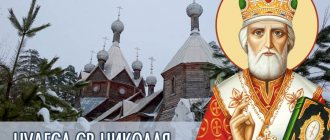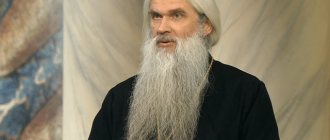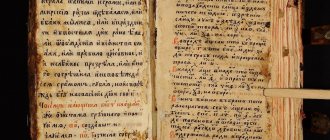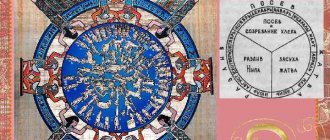Expressing the Platonic-humanistic line in medieval philosophy, Augustinianism for a long time showed itself to be the leading direction of medieval thought. Closing the movement of philosophical and theological thinking on a person, his inner world, spirituality as the embodiment of real reality, the Platonic-Augustinian directions of thinking over time (at the end of the 10th - beginning of the 11th century) encounter increasing difficulties. Due to a number of sociocultural circumstances, “naturalistic” topics are beginning to occupy an increasingly prominent place among the moments that require their own cognitive comprehension. Let us remember that the subject of philosophy is not man and not the world in themselves, but the relationship “man - world”, in which at different stages of the development of philosophical knowledge, first one or the other of its aspects comes to the fore. We are talking about the “naturalistic” intention of the Chartres and Oxford (R. Grosseteste, R. Bacon) schools and, especially, the Aristotelian-Averroist “aggression”, which in the 11th-12th centuries. begins to seriously threaten the ideological foundations of the Christian-Catholic worldview. Traditional repressive measures do not produce a positive result; rather, on the contrary, repression attracts the close attention of public opinion to the persecuted ideas.
And the first success in the fight against Averroism, which was propagated by Siger of Brabant at the University of Paris, comes from the use of precisely this specifically understood Aristotelianism. One of the leading Dominican scholastics, Albert von Bolstedt (1207-1280), or, as he was more often called, Albert the Great, used ideas specifically prepared in the spirit of Catholic orthodoxy (by means of exegesis, which was formed in the Alexandrian school) in the fight against Siger. Aristotle.
Thomism of Thomas Aquinas
However, the greatest success in overcoming the Aristotelian “threat” through the exegetical interpretation of the ideas of the great thinker of ancient Greece in the Catholic-theological spirit and the transformation of the newly “read” Aristotelianism into a powerful philosophical and ideological support of the Catholic Church falls on the share of the student of Albertus Magnus, who eclipsed his fame during his lifetime his teacher, Thomas Aquinas (1225 or 1226-1274), who was the founder of such a medieval movement as Thomism.
Thomas Aquinas
In his youth, Thomas studied at the University of Naples. In 1244 he entered the Dominican Order. The gifted young man is sent to the University of Paris, where he becomes a student of the famous Albertus Magnus. Thomas spends some time with a teacher at the University of Cologne, and in 1252 he returns to Paris as a master of theology and reads (until 1259) lectures on theology at the university. In 1259-1268 Thomas, at the request of Pope Urban IV, lectures at various universities in Italy, and from 1269, again on behalf of the Roman Curia, returns to the University of Paris, where the Augustinians then suffered defeat after defeat from Siger of Brabant.
At that time, Thomas had already developed in general terms his system of “Catholicized” Aristotelianism - Thomism, as this doctrine began to be called after the author’s name (in Latin the name Thomas is pronounced Thoma, hence “Thomism”). Foma actively joins the struggle and quickly (at the beginning of the 70s) wins a final and convincing victory over Averroism. In 1272 he returned to the University of Naples, and in 1274, having caught a cold on the way to the church council in Lyon, he died in the monastery of Cluny.
During the life of Thomas Aquinas, his “innovations” were not very approved by Augustinian-oriented theologians, and they were the ones who dominated the University of Paris. Only the Roman Curia supported the talented thinker. Worldwide recognition and fame came to him only after his death; he was awarded the honorary title of “angelic doctor”, and in 1323 he was canonized. In 1879, the philosophy of the “angelic doctor” was officially proclaimed (by the papal encyclical “Aeterni Patres”) as the philosophical doctrine of the Vatican. A modern version of Thomism—neo-Thomism—emerges and gains worldwide authority.
Space
Due to the limited knowledge of Thomas Aquinas, and indeed all people of that time, the cosmos in Thomism was represented as a ladder. The philosopher believed that at the first stage of the world there are inorganic creations, then there are plants, then animals, humans, at the fifth stage there are angels, and at the top of everything is God. He is not just the peak, but the reason, meaning and purpose of everyone and everything.
Thomist positions
Thomas Aquinas outlined his philosophical and theological system in numerous works. The most significant among them are: “The Summa of the Truth of the Catholic Faith Against the Pagans” (1259-1264) and the “Summa Theology” (1265-1274). Thomas recognizes the difference between philosophy and theology, but sees it only in the methods of achieving results. As for the subject, it differs in philosophy and theology only partially. Thomas admits that some of the dogmas of theology can be proven by philosophy (the existence of God, the unity and other properties of God, the immortality of the human soul, etc.).
Most dogmas, however, are not subject to philosophical means of proof, since they are “super-intelligent,” that is, completely rational from the standpoint of the “divine mind,” which is far superior to the human mind. When the human mind shows an inability to rationally comprehend the meaning of certain “divine truths,” it must humbly bow to faith, since the latter is simply “higher” than intelligence, knowledge, and science. So, the “harmony” (in one case “contradiction”) of faith and knowledge proclaimed by Thomas actually means the subordination of the second to the first.
Thomas Aquinas denies one of the leading Augustinian ideas about the direct nature of knowledge of the existence of God, considering the “ontological argument” of Anselm of Canterbury to be invalid. But Thomas puts forward his five proofs of the existence of God. All of them are not direct, but indirect.
“Everything that moves has something else as the cause of its movement” - the first Thomist “argument” comes from the impossibility of self-motion of an object, as a result of which a number of causes are formed, among which the last one is the Aristotelian prime mover, or God. The second proof comes from Aristotle's concept of "productive cause." Just as in the first “argument,” the line of reasoning comes to the existence of a primary “productive cause,” which is God. The third proof comes from the idea that it is impossible to assume the random nature of the world. Since the world exists, there must be some absolutely necessary reason for it, which can only be God. The fourth proof appeals to the fact of the existence in the world of various degrees of certain qualities. But in this case there must be some absolute standard by which these different degrees acquire certainty. Such an absolute measure (the highest and absolute degree of any qualities) can only be God. The fifth proof comes from the Aristotelian understanding of causation as necessarily goal-directed. But if the world is causally conditioned, then it is also purposeful, therefore, there must be one who purposeful the existence of the world, that is, God.
Thomas interprets man as a unique individual being, which finds its expression in the uniqueness of the individual human soul. This individuality is preserved in the immortal soul even after the death of the body. However, such an “incorporeal” existence of the soul is “incomplete.” The “full” substance of man requires the unity of soul and body, and must finally be realized on the day of the “Last Judgment” by the reunification of the soul with the resurrected body. The idea of the unity of soul and body, as well as their uniqueness, reveals a certain humanistic tendency in the reasoning of the “angelic doctor.”
In his interpretation of truth and the process of knowledge, Aquinas, at least formally, agrees with Aristotle, recognizing truth as the “coherence”, “adequacy” of mind and thing. But this similarity is largely formal, since things for Thomas are not independent realities, as with Aristotle. Created by God, they do not have their own existence and only “participate in being.”
What is this?
Thomism is a scientific thought in the Catholic faith formulated by the famous philosopher Thomas Aquinas. This doctrine is also called Fomism. This idea is often called the theistic interpretation of Aristotelianism. Aquinas reflected all the basic concepts in his work “Summa Theologica”. It is worth saying that these thoughts are not canons of faith, but rather a practical aid for comprehending this idea with the help of reason.
Neo-Thomism and existentialism
Thomism, growing out of a “creative” (from the standpoint of Catholic philosophy) “reading” of Aristotelianism, helped the Vatican maintain its ideological worldview monopoly in the difficult conditions of the spread of alternative ideas of Averroism. Therefore, Thomism was established for a long time as the dominant philosophical doctrine of Catholicism. Only the general crisis of medieval philosophy in the XV-XVI centuries. permanently eliminates Thomism from the world ideological arena. However, at the end of the 19th century, as already noted, a kind of “renaissance” of Thomist philosophy took place, and it again became throughout the 20th century. one of the leading philosophical movements called “neo-Thomism”.
We have seen how the Augustinian tradition, which was leading at the beginning of the classical Middle Ages (based on the humanistic-Platonic basis of antiquity), associated with the Franciscan order, gradually lost its leadership and, accordingly, the “sense of time.” Evidence of this is the conflict between the leadership of the order and the “spirit” of Chartres and Oxford. In this situation, the Dominicans turned out to be more realistic and, in the person of Thomas Aquinas, seized the leadership. However, among the younger generation of Franciscans there was a thinker who was able to creatively approach the Augustinian tradition and find new, not yet exhausted, possibilities in it. We are talking about John Duns Scotus (1266-1308), who, having joined the Franciscan order in 1281 and educated at Oxford, lectured on philosophy and theology in Paris, and then at home in Oxford and Cambridge.
The origins of Scott's work gravitate towards the mathematical-naturalistic tradition of Oxford. According to Scotus' theory, philosophy arises from theoretical knowledge, in contrast to theology, which is practical knowledge, predominantly moral and ethical. Therefore, theology does not require the rigor and precision (rationality in general) that Thomas tried to give it. Theology fully corresponds to the Augustinian criterion of knowledge - irrationalistic at its core. Like all the leading philosophers of the Middle Ages, in the debate between realism and nominalism I. D. Scot did not follow an extreme position. Only in tendency (like P. Abelard and R. Bacon) did he lean towards nominalism.
Interpreting the cognitive process primarily in a naturalistic spirit, Scott at the same time emphasizes the autonomous nature of human will, even its primacy over reason. Will, therefore, appears to him as free will, and freedom constitutes the deepest essence of man. Moreover, God’s will appears to be absolutely undetermined, and in this Scotus sees the source of divine omnipotence.
At the end of the XIII - beginning of the XIV century. classical medieval philosophy - scholasticism (both realistic and nominalistic), having exhausted its historical positive possibilities, is gradually entering a period of crisis. The latter is manifested primarily in the specialization and specification of the positive content of the philosophical searches of scholasticism, the spectrum of which not so long ago was extremely wide. Now it is becoming more and more clearly logical. By the way, logical research of this time had great scientific value.
This trend can already be seen in the works of Raymond Lull (1235-1315), who proposed a kind of “logical machine”. This was one of the first attempts at mechanical modeling of logical thinking. Modern logicians consider Lull to be the forerunner of combinatorial methods in the new logic.
Innovations
Thomism and neo-Thomism are very close. It can be said that these two teachings are synonymous. Their only difference is in the time period. The fact is that neo-Thomism is not just an idea, but the official philosophy of Catholics in the period from 1879 to 1962.
This new teaching mainly confirms the dualism of being and existence. The first is represented by God, and the second by nature. Thus, the Lord remains the first cause, the thing is the synthesis of matter and form, and the process is the movement of potency towards actuality. Now the popularity of these two movements has become much less. It's no secret that more and more Europeans are becoming atheists.
Occam's nominalism
William of Ockham
Representative of late scholasticism, the Englishman William of Ockham (c. 1300-1350), who studied and then taught at Oxford, took an almost extreme nominalistic position. This was reflected primarily in Ockham’s consistent pursuit of the position of “dual truth” to the complete separation of the subjects of theology (its sphere is only the texts of the Holy Scriptures) and philosophy, which is completely independent of theology and relies in its research only on reason and experience.
Consistently pursuing his nominalistic line in denying any objectivity of the existence of general concepts, Ockham uses his famous “razor” (“Occam’s razor”), with the help of which all “entities” (general concepts) were cut off, the necessity of which was justified purely logically. General concepts are themselves terms expressed in words, and in this regard they are something singular. They acquire the property of universality only in the mind as a result of attributing to them one or another meaning. Hence “terminism,” as Ockham’s theory of general concepts is often called. With his concept of “terminism,” Ockham laid the foundation for the interpretation of general concepts as a system of signs, sign systems.
Popularization of Aristotle's works
Despite the fact that Aristotle was a pagan, the Church did not perceive his teachings with hostility, because in his works he collected the best thoughts of that time. In addition, Aristotle was referred to by the Catholics' opponents - Jews and Muslims, which means that Catholics needed arguments for a reasoned debate.
Previously, in France they used the works of the ancient thinker translated from Arabic. Thomas proved that this translation contains many inaccuracies and distorts the essence of the philosopher’s thoughts; he managed to achieve a ban on the publication of Aristotle’s works in this translation.
The main feature of the philosophy of St. Thomas is Aristotelianism
The works of Aristotle largely became the basis of Aquinas's philosophical thought. He not only thoroughly studied the thoughts of the ancient philosopher, but was also able to adapt them to the Christian worldview.
Aristotle believed that there are 4 stages of knowledge of truth - art, knowledge, experience and wisdom. Thomas put wisdom at the highest level, since he considered it the only way of Divine knowledge.
Wisdom, in turn, Thomas divided into three stages: the wisdom of grace, theological wisdom and metaphysical wisdom. Metaphysical wisdom relates to philosophy and helps to understand the essence of existence, and theological wisdom helps to believe in God.
Aristotle argued that the fact of existence confirms the life of any person or other living being. Thomas said that only God provides the opportunity to live.
Important! Thus, being can be independent and dependent. Independent and true existence is inherent only in God; everything else depends on His will and is subordinate to Him.
Medieval mysticism
One of the characteristic features of the crisis of medieval consciousness was the spread at the end of the 13th - beginning of the 14th centuries. mysticism, among the most famous representatives of which was Johann Eckhart (1260-1327), or, as he was often called, the Master (teacher). Johann Eckhart was a member of the Dominican Order and taught for some time at the University of Paris.
Johann Eckhart
He proceeded from the "apophatic" theology of the Corpus Areopagitica. God, according to Eckhart, is present in everything, but not a single creature, with the exception of man, notices this presence. A person “notices” God in himself, but not through rational reasoning, but through a direct and silent “experience” of God in the hidden depths of his nature. It was not for nothing that Eckhart was called the Master. He did train many followers, the most famous of whom were Johann Tauler (1300-1361) and Henry Suso (1300-1365). The ideas of Eckhart and his students also influenced the formation of the reformation ideas of M. Luther.
Late medieval mysticism as a specific reaction to the logical-rationalistic one-sidedness of the philosophical constructions of late scholasticism (the latter was a completely natural consequence of the formalism of the Roman-Latin mentality of the “Western” paradigm of medieval thinking) in an “apophatic” manner (inherent in the “Eastern” paradigm of medieval philosophy) reproduced Plato’s dialectical thought . It was here that German classical philosophy of the 19th century, which was in dialogic communication with German romanticism, drew its philosophical “attitude” towards the light, its unique dialectical character. Next we will see how the same “apophatic” (in particular “areopagic”) Neoplatonism is already directly within the framework of the “Eastern European” medieval paradigm.
The significance of Thomism and medieval philosophy in general
In the literature there is a sweepingly negative assessment of the Middle Ages as a “failure” in the “normal” course of the historical process, as a “step back” in history, as the “Dark Ages” and others. First of all, the spiritual life of the medieval era was assessed sharply negatively, although there are no objective grounds for this. The medieval era is one of the historical eras, with its own specifics, but it is no worse than any other historical era. In the middle years, a big step was made in the development of philosophical knowledge (a new understanding of time and creativity, identifying the specifics of spirituality as one of the essential characteristics of reality, studying the multifaceted relationship between the individual and the general, etc.). Without this step, further development of philosophy would have been impossible. Another thing is that the pace of cultural development of the Middle Ages was somewhat slowed down.
A negative assessment of the Middle Ages was a “normal” reaction of representatives of “new thinking” to the ideas of a society that, having fulfilled its historical mission, remained in the past. This was the reaction of the thinkers of the so-called Renaissance to the ideas of the already crisis Middle Ages. At the same time, it is known that the assessments of the crisis of antiquity were similar on the part of the then young Middle Ages, which was replacing antiquity (let us remember, for example, K. Tertullian).
The crisis of medieval philosophy meant, first of all, the crisis of the medieval philosophical paradigm, the need to replace it with a new philosophical paradigm, which would contain the possibility of overcoming this crisis. The subjective (one that stated the inability of traditional - medieval - philosophy in new conditions to effectively provide for the spiritual needs of society) assessment by the thinkers of the Renaissance of the Middle Ages was uncritically adopted by subsequent generations and absolutized by them. Having lost the moment of truth that was in the said assessment, it turned into a mistake. However, Renaissance thinkers did not simply evaluate medieval philosophy (negatively). They (and this is the main thing) proposed new ideas that formed the foundation of a new philosophical paradigm.











